About The Salvation Army
The Salvation Army, an international movement, is an evangelical part of the universal Christian Church. Its message is based on the Bible. Its ministry is motivated by the love of God. Its mission is to preach the gospel of Jesus Christ and to meet human needs in His name without discrimination.
Our History
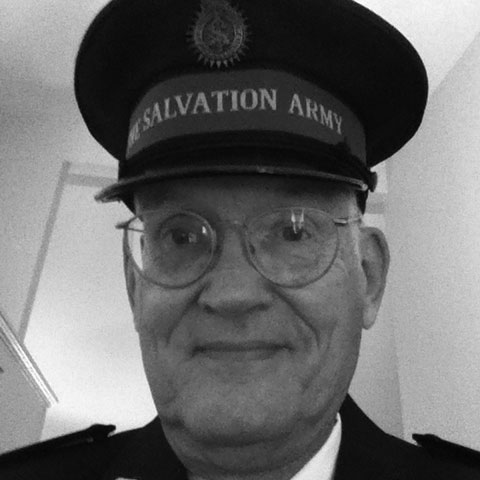
In 1865, William and Catherine Booth began the Christian Mission to preach the Gospel to the neglected poor in London, England. William was a gifted and powerful orator; his guiding light was Catherine, well-read, refined and a pioneer advocate for equal rights for women in Christian service. The Mission gained converts and public support. The Booths and their associates knew that many who came to listen were in a sad state—hungry, homeless, unemployed or paid too little to live decently. Along with evangelistic meetings, the Mission began to offer on-the-spot, practical assistance, such as meals, lodging
and clothing. Other faithful Christians joined the Booths in their work, which grew rapidly in London and spread to other towns.A few years later, however, the Booths’ early success was overshadowed by a great change. In 1878: Booth and his team changed the Christian Mission into The Salvation Army! The original biblical doctrines were retained, but otherwise the transformation, which came in steps—the Booth approach to any proposal was to try it, and keep anything that worked—was dramatic and soon complete. The new structure took a more militant and active approach to soul-saving and helping people in practical ways. The devil was real, both cunning and terrible. Nothing short of actual warfare was called for, and there was no time to lose! Ministers and members became Officers and Soldiers, uniforms, flags, brass bands, warlike publications (“The War Cry”, still published), banners, corps (local congregations), pages of official “orders and regulations” followed in turn.
The military format was a great success. Much of the Army style appealed to a sizable portion of public taste in those days. It was also a highly effective way to organize new converts and make good use of their energy and talent. Army leaders for their part gave all the credit to the Spirit of the Lord, Who led the Army in the “Great Salvation War.”
Of course, the devil did not step aside in the face of the challenge. Not all public opinion was favorable. The Army’s crusade against drunkenness and prostitution, among other things, was unwelcome to those who lived by providing such vice. Some of these people resorted to violence. Other, higher level types looked down on the Army as comical fanatics. Salvationists accepted hostility and ridicule as proof they were confronting Satan directly. Driven by
Edward McKinley, Dr.love for lost souls, The Salvation Army grew into a mighty movement for salvation and social uplift—for spiritual and personal restoration. The new Salvation Army grew rapidly, and soon sent expeditions to start the work in other countries. The first foreign crusade was sent to the United States in 1880, but that’s another story!
Learn more by watching this video or by reading Dr. McKinley’s book, “Marching to Glory: The History of The Salvation Army in the United States 1880 – 1992.”
Our Name

A young man’s passion and the stroke of a pen changed history and the result is what we know as The Salvation Army. It was an “all or nothing” attitude that changed the name from The Volunteer Army to The Salvation Army. The divine and human aspects captured in the word “salvation” continue to remind us that we are saved by God to serve humanity.
Swetha Vincent, Captain
Read Lex Loizides’ research on The Salvation Army’s name.
Our Beliefs
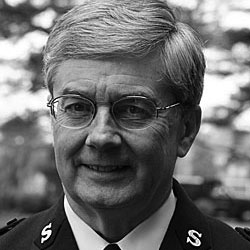
The Salvation Army, as part of the historic Christian Church, believes first and foremost that Jesus Christ is the Son of God. He is, as John 1:14 states, the Word made flesh or God in the flesh, and is
therefore the Redeemer of all who believe in Him.By His life, ministry, suffering, death, and resurrection He has provided the means by which sinful humanity can be at one with God.The authority for these claims come from the Bible which, because it was inspired by God, receives its authority and thereby becomes the message to all humanity that God loves us. The great manifestation of that love is that God sent Jesus the Christ, the Messiah, to preach that message and demonstrate that message by His parables, miracles, and His teachings about the law of God. With the coming of Jesus Christ, the Kingdom of God broke into our lives, and all who believe become citizens of that Kingdom of God. As citizens, our primary responsibility is to proclaim the Gospel as stated by Jesus: “The time is fulfilled, and the Kingdom of God is at hand. Repent, and believe in the gospel” (Mark 1:15, NKJV).
Response to God’s love is the beginning of the Christian pilgrimage here on earth, the beginning of the life of sanctification. But we teach that every believer and that the entire Body of Christ can be wholly sanctified so that we conform to the image of Christ in word and
in deed . By conforming to that image, we demonstrate the values of the Kingdom of God, and thereby testify that we live our lives and do our work in the light of “whatever is true, whatever is noble, whatever is right, whatever is pure, whatever is lovely, and whatever is admirable” (Philippians 4:8, NIV). Roger Green, Dr.
We believe that God has raised up the Church to bear witness to Christ and His Kingdom, and The Salvation Army is a part of the Body of Christ. Therefore, we strive to be obedient to the words of our Lord: “You shall love the Lord your God with all your heart, with all your soul, and with all your mind. This is the first and great commandment. And the second is like it: ‘You shall love your neighbor as yourself.’ On these two commandments hang all the Law and the Prophets” (Matthew 22:37-40, NKJV). We delight in loving God and loving our neighbor, and we are reminded that all people are our neighbors, but especially the poor. God raised up The Salvation Army to minister to the poor and we rejoice in that ministry. We make no distinction between our spiritual work and our social work. Everything that we do is done to the glory of God.
Read the doctrine of The Salvation Army here.
Our Officers
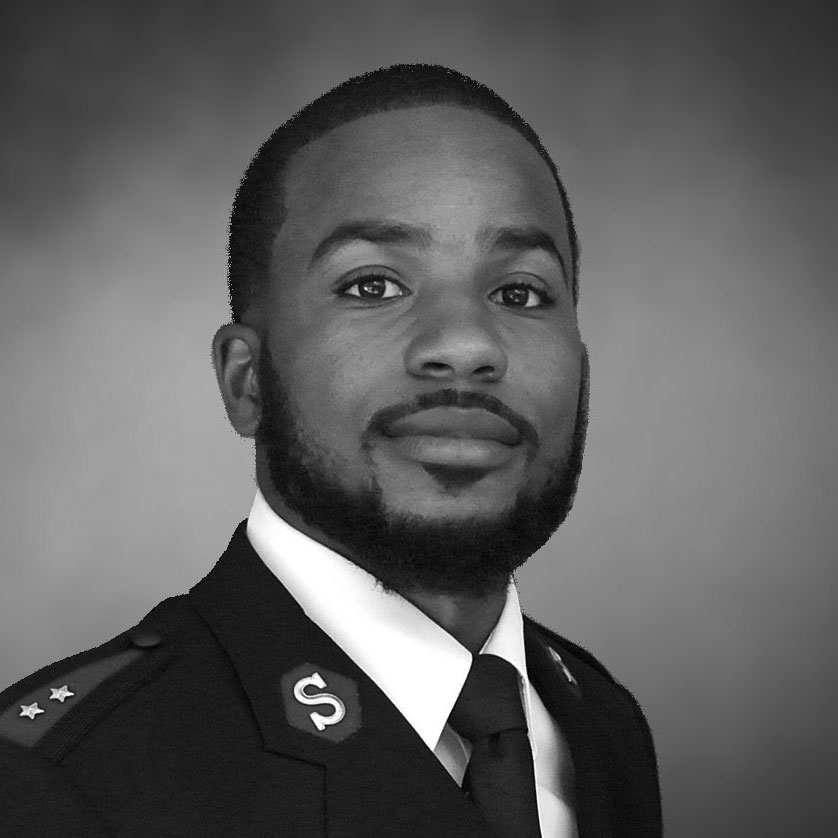
An officer in The Salvation Army is a man or woman who, following two years of training, are ordained and commissioned as ministers of the Christian faith. Officers fulfill many roles—they proclaim the gospel, serve as pastors, administrators, teachers, social workers, counselors, youth leaders, and musicians. These men and women have dedicated their lives, skills, and service completely to God.
Being an officer in The Salvation Army is like being a manager of a company. In our company, we offer hope and community to all who come through our doors. I say manager intentionally, because we recognize that we are not the owner of what we have been trusted to oversee, operate and manage. The Lord is the founder, CEO and president of our company. Every bit of responsibility we have has been given to us by Him.
This isn’t a position that you just apply for and wait for a callback. There’s a process for the eligible (notice I didn’t say the qualified). There’s a two-year training process for those who accept the challenge of this work.
When the two years are up we sign a contract, not just with the brand but with the mission. We ink our names under words filled with promise and purpose to be good at business and our business is people. We agree to invest our time and company resources into people wherever and whenever we are asked to go.
Do we do this because we are just nice people? No. We do this because we are motivated by love and compelled by Jesus. Being an officer is a response to what God has done for me. I made a promise to Him. The good I get to do is the result of Jesus’ love for me overflowing into the communities that I am in.
Darell Houseton, Captain
Read All the Things You Never Knew about being an officer and the steps to becoming an officer in The Salvation Army.
Watch: Is God calling you?
Watch: Thinking Of Becoming A Salvation Army Officer? | Be The Change
Our Training

The College for Officer Training is a two-year, residential training designed to educate and equip men and women who have been called by God into full-time, life-long ministry as officers in The Salvation Army. It is an immersive experience, focusing on spiritual and leadership development as well as training in all aspects of Salvation Army officership. Its mission is to develop men and women in character, conduct, and capabilities to advance the mission and ministry of The Salvation Army. At its heart, the Salvation Army Officer Training program is sacred space—holy ground—where men and women come to explore God’s calling in their lives and offer themselves to be equipped for His service.
Brian Saunders, Major
Check out the colleges for officer training across the United States:
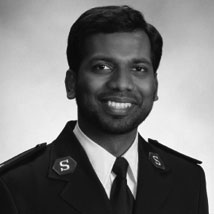
I came to the College for Officer Training or the seminary by sensing God’s call to an ever-widening array of workplaces and ministries. It was my interest to deepen my theological roots so they could be applied inside or outside of a church or the corps building. The training I received at the CFOT was from the well-equipped officers, staff and my colleagues in training who are all surrendered to the scripture. For me, training was not just about gaining knowledge of who God is, but it also helped me to learn and practice Christlikeness through the disciplines of prayer, worship, meditation, discipleship, fellowship, and study.
Anil Kumar, Lieutenant
Learn more about the training process and becoming an officer.
Our Ranks
When a man or woman enters the college of officer training in obedience to God’s call on their lives, they adopt the rank of cadet. After two years of study and practical training experience, they are ordained and commissioned with the rank of lieutenant. Officers wear red
epaulettes on their uniform and soldiers wear blueepaulettes . You can tell an officer’s rank by looking at theirepaulette .Lieutenant: an officer of under 5 years of service; one star is on their
epaulettes .Captain: an officer who has completed between 5 and 15 years of service; two stars are on their
epaulettes .Major: an officer of more than 15 years of service; a crest is on their
epaulettes .Lieutenant Colonel: a rank obtained by an officer or officer couple where one or both holds an appointment classified as “Senior Reserved” and has served as an officer for at least 20 years. In the United
States these include territorial cabinet positions and divisional commanders of larger divisions.Colonel: this is a rank reserved, in the United States, for officers holding the appointments of Chief Secretary or Territorial Secretary for Women’s Ministries. In other countries, it may be an officer who is assigned to lead a territory or command.
Commissioner: this is a rank reserved for senior leaders in The Salvation Army. In the United States, only officers appointed as Territorial Leaders or National Leaders are assigned this rank. Internationally this will include many officers who lead territories as well as some senior leaders at International Headquarters.
General: There is only one General (international leader) of The Salvation Army, appointed by the High Council—the group of territorial leaders from around the world who prayerfully elect the next General.
Learn more about the ranks within The Salvation Army.
Our Church

I would describe my Salvation Army church as my second home. It’s a place where I always feel welcome and beyond comfortable. I’m always there whenever I can be, participating in various activities whether it be Brass or Praise Band, Creative Arts and Corps Cadets [a discipleship program for young people]. I started attending The Salvation Army with my mother and two younger sisters at the age of four. I’ve been influenced by so many people, I can’t count them all! The Salvation Army has done so much for me and my family—I want to continue being a part of it and helping it grow and spread.
Widline Gourdet

My Salvation Army church is the place I come for spiritual renewal every week. I love it because it is where I can feel the Lord’s presence the strongest. I have gone to The Salvation Army since I was born and was even dedicated at a Salvation Army corps.
Benjamin Rader Bailey

I would describe my church as a safe haven—physically and emotionally. A place to run to when things weren’t going so well at home. But what I love most about my church is how inclusive the local, divisional, and territorial leaders are. How authentic and supportive they are to me plays a pivotal role in who I am today and in my walk with Christ.
Stephania CheryOoooooo , and I LOVE the band!!!! I’ve been attending The Salvation Army since I was nine years old and since then, I have learned that we are all God’s children—Hisambassadors,
and that no authority, law, or government can say otherwise. I have learned that we are all family, no matter the circumstances and have a job to do on this earth within the time He grants us. I have learned to “Do the Most Good” and wins souls for Christ.
Have you checked out our Salvation Army youth events near you?
The Salvation Army strives to meet needs within communities.
Learn more about what motivates The Salvation Army to reach the greatest need.
Our Uniform
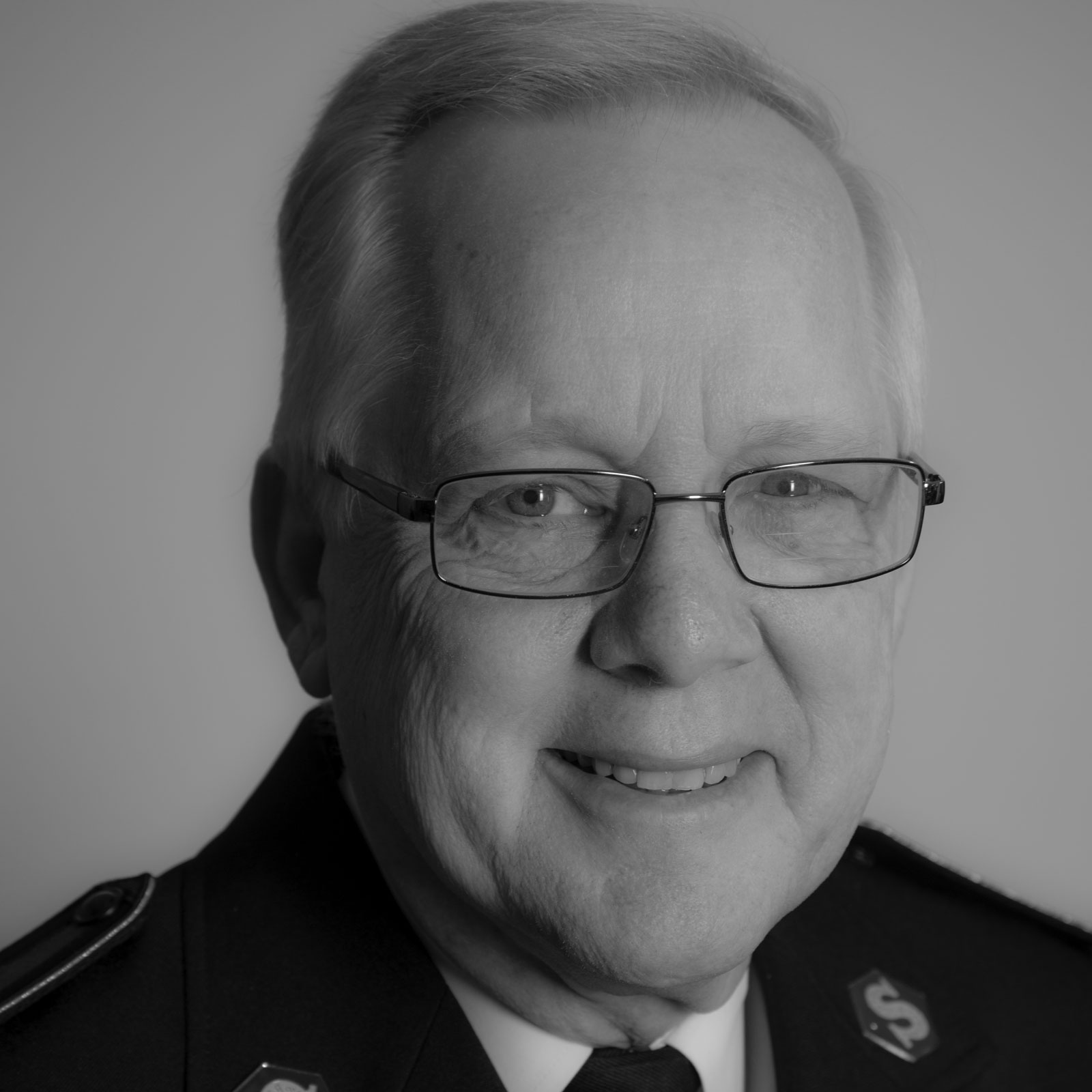
Even while The Salvation Army was still named the Christian Mission, it was taking on a more militant feel. So it was that one of its early pioneers, Elijah Cadman, wrote, “I would like to wear a suit that would let everyone know I meant war to the teeth and salvation for the world.” Soon after the Mission changed its name to The Salvation Army a host of uniforms cropped up using everything from pith helmets and police caps for the men to dainty lace bonnets for the women. In 1880 when The Salvation Army “invaded” the United States, a standardized uniform was introduced for George Scott Railton and the seven Hallelujah Lassies who composed the pioneering party.
The uniform has been adapted over the years both to changing times and the cultures in which the Army labors. But the message of the uniform has always remained the same. As Florence Booth once said, “The uniform was not designed merely to secure outward uniformity. The uniform, like every other distinguishable mark of The Salvation Army, was designed to be an expression of our great soul-saving purpose. Our uniform was introduced so that the man in the street should know the Salvationist, so that the Salvationist, wherever he went, should be labeled as set apart for Jesus, marked as one eager to pray with and to help others.
As military uniforms help distinguish friend from foe, so the Salvationist in uniform shows himself to be an enemy of Satan and a friend to sinners and the suffering. Salvationists wear
Allen Satterlee, Lt. Coloneluniform to declare to the world that he or she has taken a stand as a soldier of Jesus Christ!
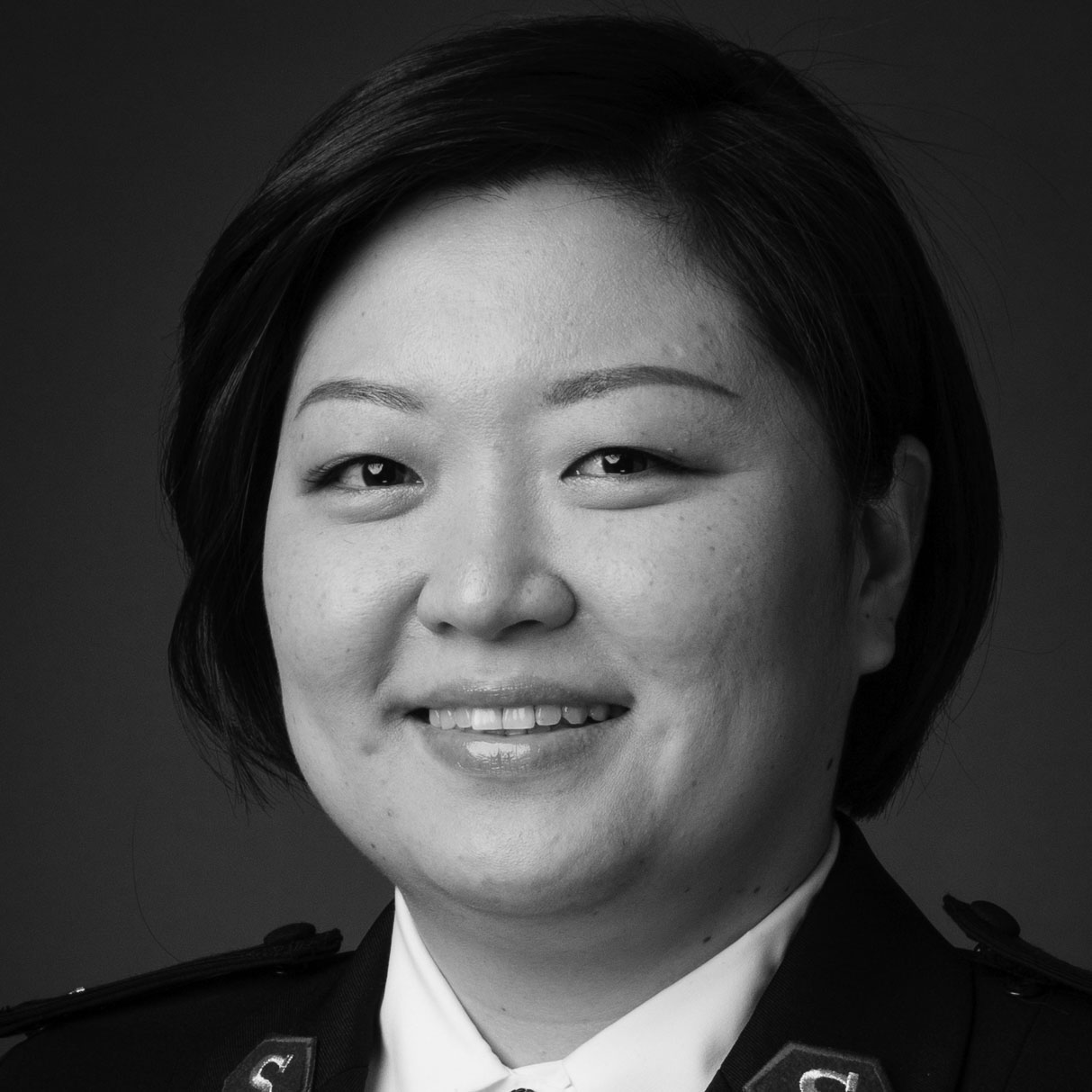
A man dressed in full blue and white uniform, stuck out so much as he crossed the streets of colorful San Francisco. That’s the very first memory that comes to mind when anyone asks me about my first experience of going to a Salvation Army corps. Even though there were other people dressed in suits beside this man, for some reason, this navy-blue uniform stood out and grabbed my attention. The man seemed to have more purpose in his step as he walked. And that’s what I love about The Salvation Army uniform. I know that whenever I wear it, it gives me opportunities to speak to those who notice it like I did. I don’t have to be in the middle of a square with a giant sign and bullhorn to make a statement that I belong to something bigger than myself, that I have the good news to share, and that I also have a purpose for my life. As I dress every morning, I pray that this uniform can be a way that I “put on the new self, created to be like God in true righteousness and holiness” (Ephesians 4:24, NIV).
Kailah Kim, Lieutenant
Our Band
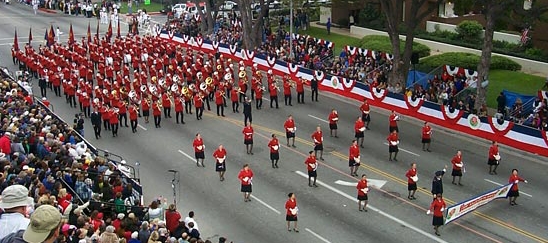
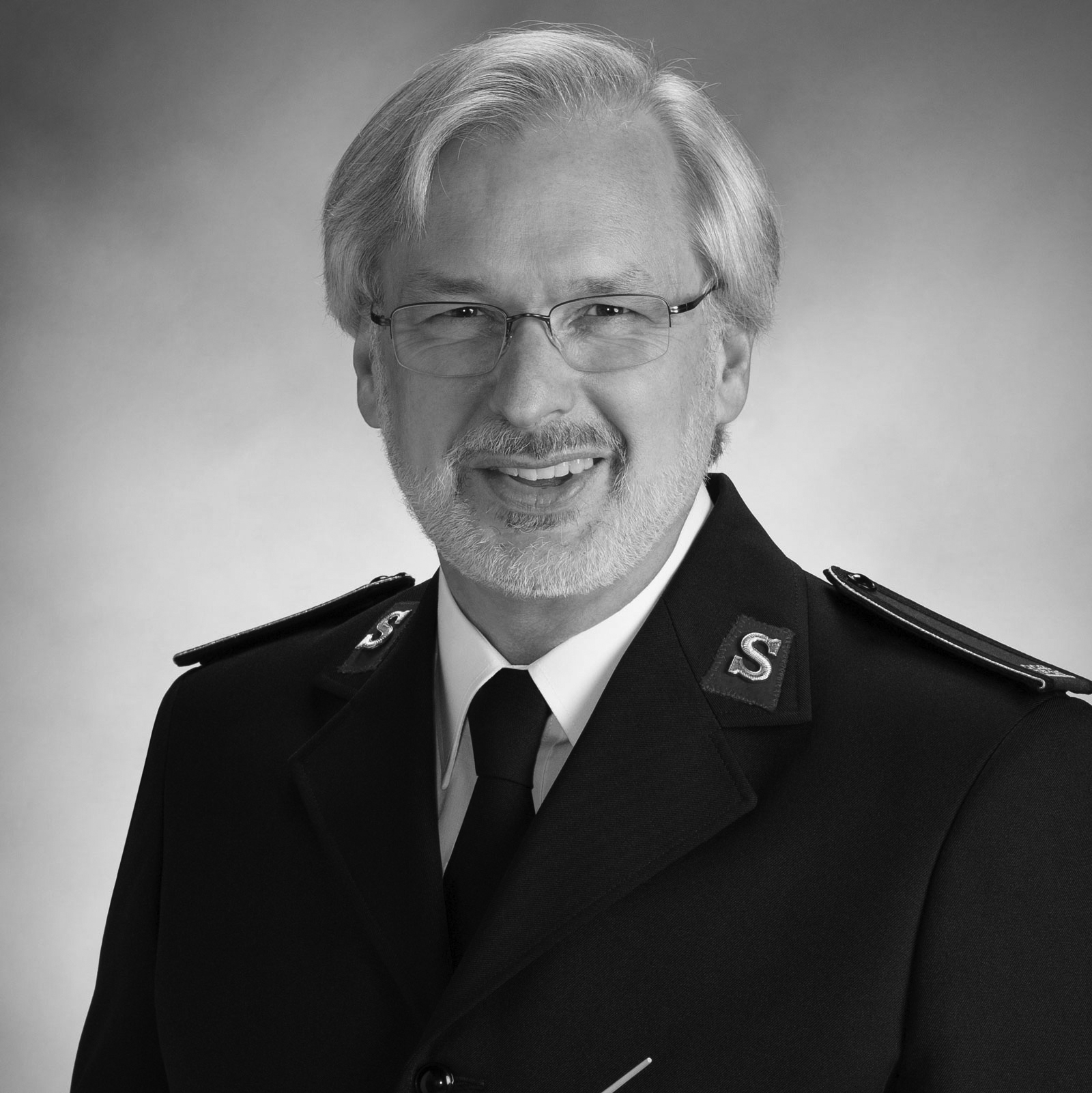
From the early days of Salvation Army street meetings, brass musicians like the Fry Family quartet (Salisbury, England, 1878) were especially effective in getting people’s attention. Then, whether on the street or back at the Army hall, the band gave strong musical support to the singing. In the 19th century, the piano was considered a secular instrument, not suitable for sacred purposes. Solely the organ was used in churches, so for TheSalvation Army to adopt a policy of using any and all instruments to support the congregational singing was radical for its time. Those early-day musicians could hardly have imagined the international escalation and modern-day sophistication of Salvation Army music-making. Over 150 years later, brass bands alone number more than 2,400, comprising some 46,000 members on every continent. Like those early Salvationist pioneers, the central purpose remains ‘to bring glory to God and the salvation of souls.’”
Harold Burgmayer, Chicago Staff Band Bandmaster
When was the first Salvation Army band created?
Our Flag
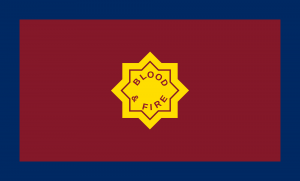
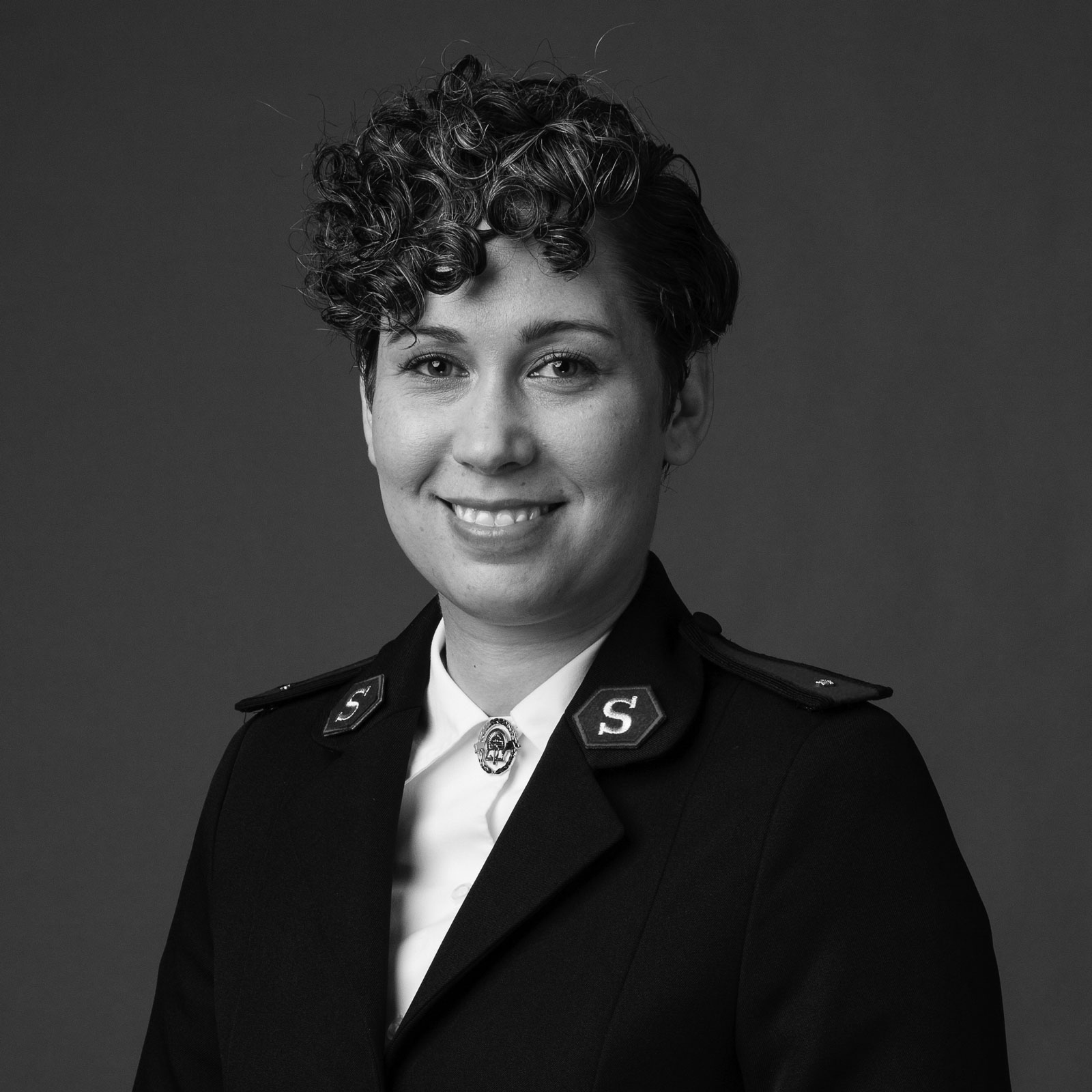
The Salvation Army has a flag so that we can let people know who we are and what we represent. When The Salvation Army first began, it faced a lot of opposition. But when they marched down the street waving the Army flag, they let the whole world know that they were claiming that territory for Jesus Christ. When I personally look at the flag, it reminds me that no matter what I face, I am covered by the blood of Jesus Christ, and filled with the fire of the Holy Spirit. When I see it, I know that my job is to go out and claim more and more ground for Jesus Christ.
Melissa Jones, Lieutenant
What do the flag and other symbols of the Salvation Army mean?
Our Publications

The National Publications Department, with offices at National Headquarters in Alexandria, Virginia, represents the mission of The Salvation Army through print and digital publications and initiatives which include:
– “The War Cry.” This monthly magazine is one of the longest running in the United States.
– “Peer,” the new magazine and associated online communication channels that reach out to Generation Z
– “Word & Deed,” a Journal of Theology and Ministry
– Crest Books, with more than 50 published titles that cover history, biography, theology, evangelism, and inspiration.
The Salvation Army’s rich literary tradition, developed over its 153–year history, consists of works by a long line of distinguished contributors. These journalists and authors have detailed what it means to live God’s Word out in all its soul-saving, world-redeeming power. The Publications Department builds on this tradition by using all available means to spread the Good News of the Gospel, report on the mission of The Salvation Army and speak to the culture with truth and love today.”
Jeff McDonald, Editorial Director, NHQ Publications Department
Find out more about The Salvation Army’s publications here.
Our Kettles

You may recognize me as one of the notoriously outrageous NYC dancing bell ringers! Kettle season always provides a special opening for The Salvation Army to speak hope and joy into the hearts of countless people. One of my favorite things about Kettles is the opportunity to encounter and engage people of every background, culture and social status; to be reminded that in spite of our many differences, collectively at the heart of humanity, there is a passionate desire to serve one another in love. I am always amazed by the personal stories that people share in those moments as they stop by to drop a few coins in the kettle. Who knew that the ChaCha Slide could be so effective in establishing intimacy and trust? 🙂
Every Kettle season, I am reminded that even the small, seemingly insignificant acts of service and love can leave a lasting imprint on the lives of those on the receiving end. I am deeply inspired whenever I see kids and young people catch that joy, make the connection and embrace the role that even they can assume in providing hope for others.
If making an absolute fool of yourself inspires strangers to think long and hard about being compassionate and caring towards our neighbors, then go ahead and dance like there’s no tomorrow!
Nate Hinzman, Lieutenant
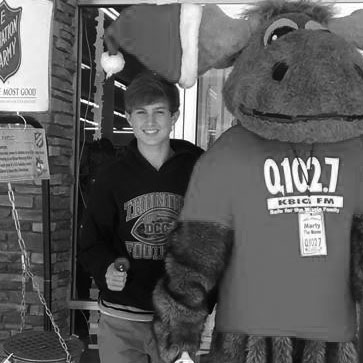
Serving in The Salvation Army has given me a whole new perspective on helping others. I have helped with everything from feeding homeless neighbors in our community to emergency disaster fires and bell ringing. You get to do a little bit of everything with The Salvation Army.
When I was younger, I was sometimes ‘
Jared Turnervolun-told ’ by my mom to help, but looking back I am so glad that I was taught to help others. When you volunteer, you always feel good afterward. I will definitely be volunteering this year!
Do you know the history of the Red Kettle?
Our Stores
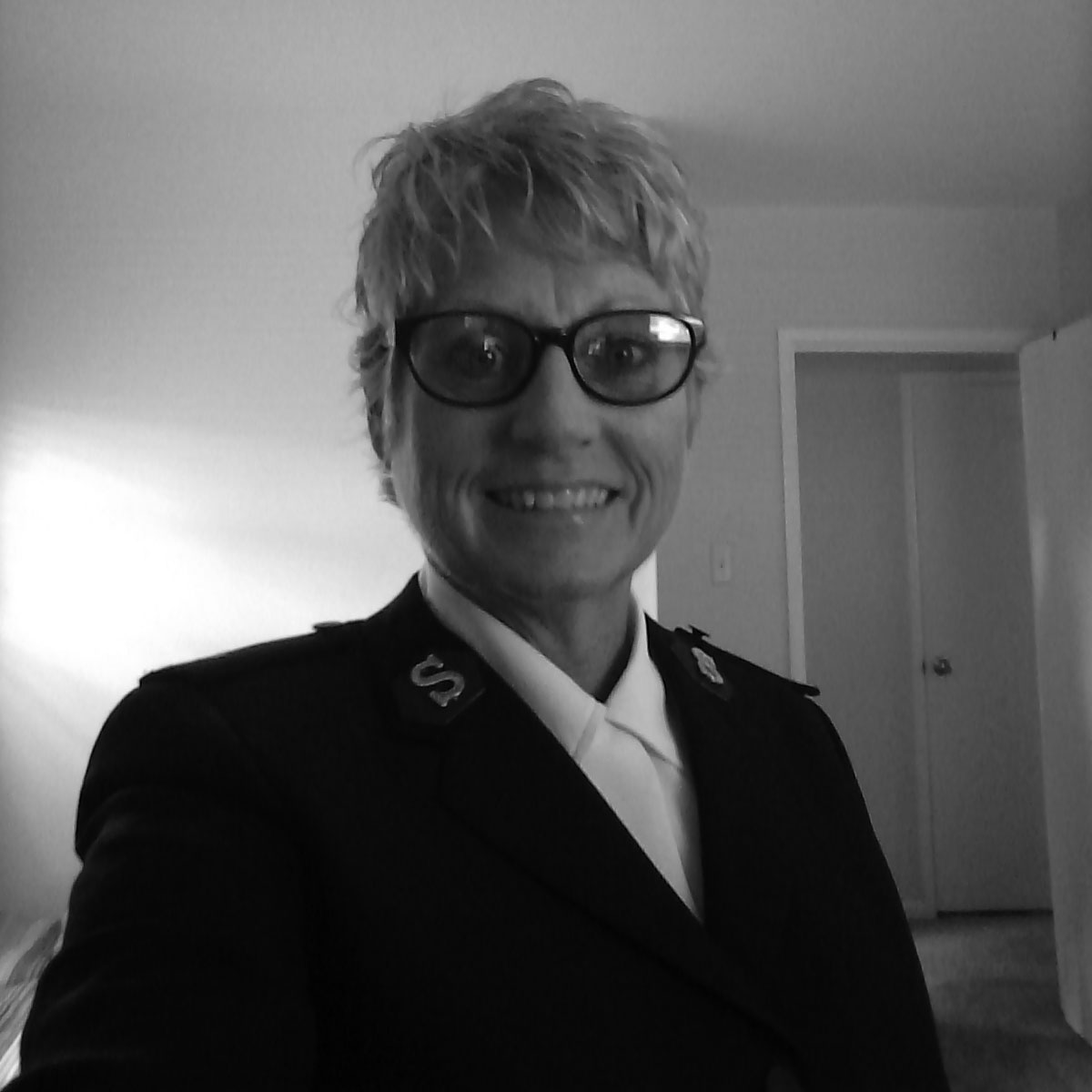
There is so much more
that meets the eye when shopping in our Family Stores. Our stores restore lives through the donated goods which we recycle in order to be able to offer services that are provided in our Adult Rehabilitation program.Our program is totally funded by the reselling and recycling of donated goods. We offer a long-term, faith-based residential program to those that need a little help getting reintegrated back into society.
You will find that our stores are more than just used clothing—you will take a trip down memory lane, perhaps find that one perfect item that will look just right in your home, at work or in a college dorm.
You never know what you will discover in our stores, from new items donated by local retailers to priceless antiques that have been stored away forever waiting for that one special purchase.
If you are looking for an adventure and have a flare for the eclectic, that is what you will find in our Family Stores.
Darlene Clark, Lieutenant
Find out more about The Salvation Army’s stores here!
Our ARC
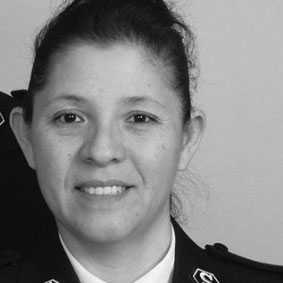
An ARC is an Adult Rehabilitation Center—a place where men and women come for a six-month program to receive treatment and spiritual help to recover from drugs and alcohol addictions.
The men and women go through a six-level program that includes anger management classes, work therapy assignments, spiritual classes, counseling, along with Wednesday and Sunday chapel services.
The program is funded by family stores. Each ARC has several family stores, some have as little as five, others can have up to 30 stores. The money received gets split three different ways. It pays our employees, it funds our mission as an ARC, and last but not least, we contribute to world services which
funds the work of The Salvation Army overseas.Our mission is to give those who are suffering from addiction a second chance to experience recovery, redemption, and restoration of their lives through knowing Christ and the several classes that we offer.
We celebrate each level as men and women accomplish them, and once they have gone through all levels they graduate and are employed.
It is a challenging but rewarding ministry as we see more and more men and women gaining their dignity and their family back. We can’t do this on our own—we acknowledge that Christ is the only hope.
Wendy Meyers Bautista, Cadet
Find out how God has used Adult Rehabilitation Centers to save lives and how the program works.
Our Kroc Centers
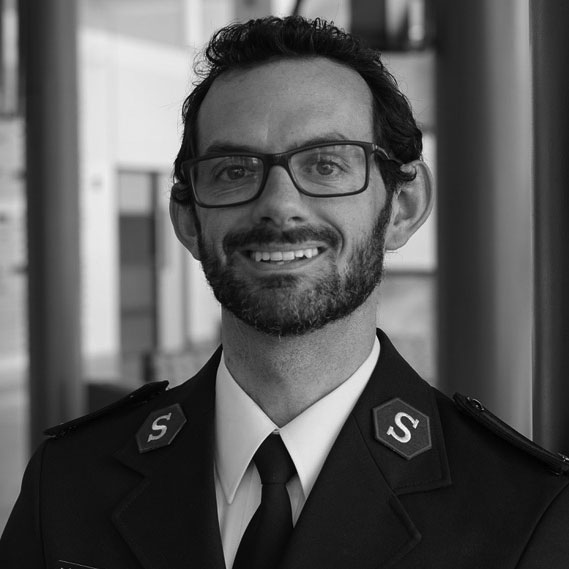
Kroc Centers are an exciting and unique ministry within The Salvation Army. They are large-scale community centers designed to be places of hope and opportunity where underserved communities have access to state-of-the-art facilities and programs. Kroc Centers offer a ministry which is holistic, a one-stop-shop location serving the body, mind
Nathan Bridges, Captainand soul through programs in education, arts, recreation, fitness and worship. The name comes from Joan Kroc, wife ofMcDonalds executive Ray Kroc, who donated 1.5 billion dollars to establish Kroc Centers across the country. If you’re interested in getting involved, visit KrocCenter.org to see if you live near one of the 26 Kroc Centers that are located throughout the United States.”
Check out the story behind the Kroc center in San Diego!
Our Terminology
Adherent: A person who regards The Salvation Army as his/her spiritual home but has not made a commitment to wear the uniform.
Blood and Fire: The Salvation Army’s motto; refers to the blood of Jesus Christ and the fire of the Holy Spirit.
Cadet: A Salvationist who is in training to become an officer.
Candidate: A soldier who has been accepted for into the training school to become an officer.
Corps: A Salvation Army unit established for the preaching of the gospel, worship, teaching, and fellowship and to provide Christian-motivated service in the community.
Corps Cadet: A young Salvationist between 7thgrade and age 24 who undertakes a Bible-based course of discipleship and leadership with practical training in a corps. It prepares young people to be effective in Salvation Army service and gain an understanding of The Salvation Army beliefs and practices.
Crest: Soon after the Christian Mission became The Salvation Army in 1878, Captain William H. Ebdon’s design of an emblem to symbolize the movement’s message was accepted by headquarters. The “S,” positioned at the center tying together the various elements of the crest, stands for salvation. The crossed swords emphasize the warfare against sin which we are engaged in. The cross represents Jesus Christ, and the stars point to the truths of the Gospel. The surrounding sun is the Sun of Righteousness and also speaks of the fire and light of the Holy Spirit.
Division: A number of corps grouped together under the direction of a divisional commander (may also include social service centers and programs), operating within a terror or command.
Envoy: A Salvationist who visits corps, societies, and outposts, for the purpose of conducting meetings. An Envoy may be appointed in charge of any such unit.
General: The officer elected to the supreme command of the Army throughout the world.
Junior Soldier: A boy or girl between the ages of 7 and 14 who have accepted Jesus as their Savior and begin to be disciples in biblical truths, life applications, and Salvation Army principles and practices. A Junior Soldier signs the Junior Soldier’s Promise, wears a Junior Soldier uniform and become a Salvationist.
Mercy Seat: A bench provided as a place where people can kneel to pray; seeking salvation or sanctification, or special consecration to God’s will and service. It is usually situated between the platform and main are of Salvation Army churches as a focal point to remind all of God’s reconciling and redeeming presence.
Officer: A Salvationist who has been training, commissioned and ordained to service and leadership, in response to God’s call. An officer is a recognized minister of religion.
Salvationist: A person of any age, uniform wearing or not, who attends The Salvation Army and claims it as their spiritual home.
Soldier: A person at least 14 years of age who
has accepted Jesus Christ as their Lord and Savior and becomes a member of The Salvation Army after signing the Soldier’s Covenant (with the approval of the senior pastoral care council). The soldiers of The Salvation Army (wearing blue epaulets) are local citizens in communities throughout the U.S. who give allegiance to the doctrines and disciplines of the Army. As of2017 the United States has 84,346 soldiers.Soldier’s Covenant: The statement of beliefs and promises which every intending soldier is required to sign before being enrolled as a soldier. Previously called “Articles of War.”
Territory: A country, part of a country or several countries combined, in which Salvation Army work is organized under a territorial commander.
Uniform: The Salvation Army uniform identifies the wearer as a member of an international movement and evangelical part of the universal Christian church. Cultural and climatic variations are considered in design and color. This is reflected in India’s sari for women soldiers and officers and in the white uniforms worn in tropical territories. Learn more about The Salvation Army’s terminology here.
Our Theology
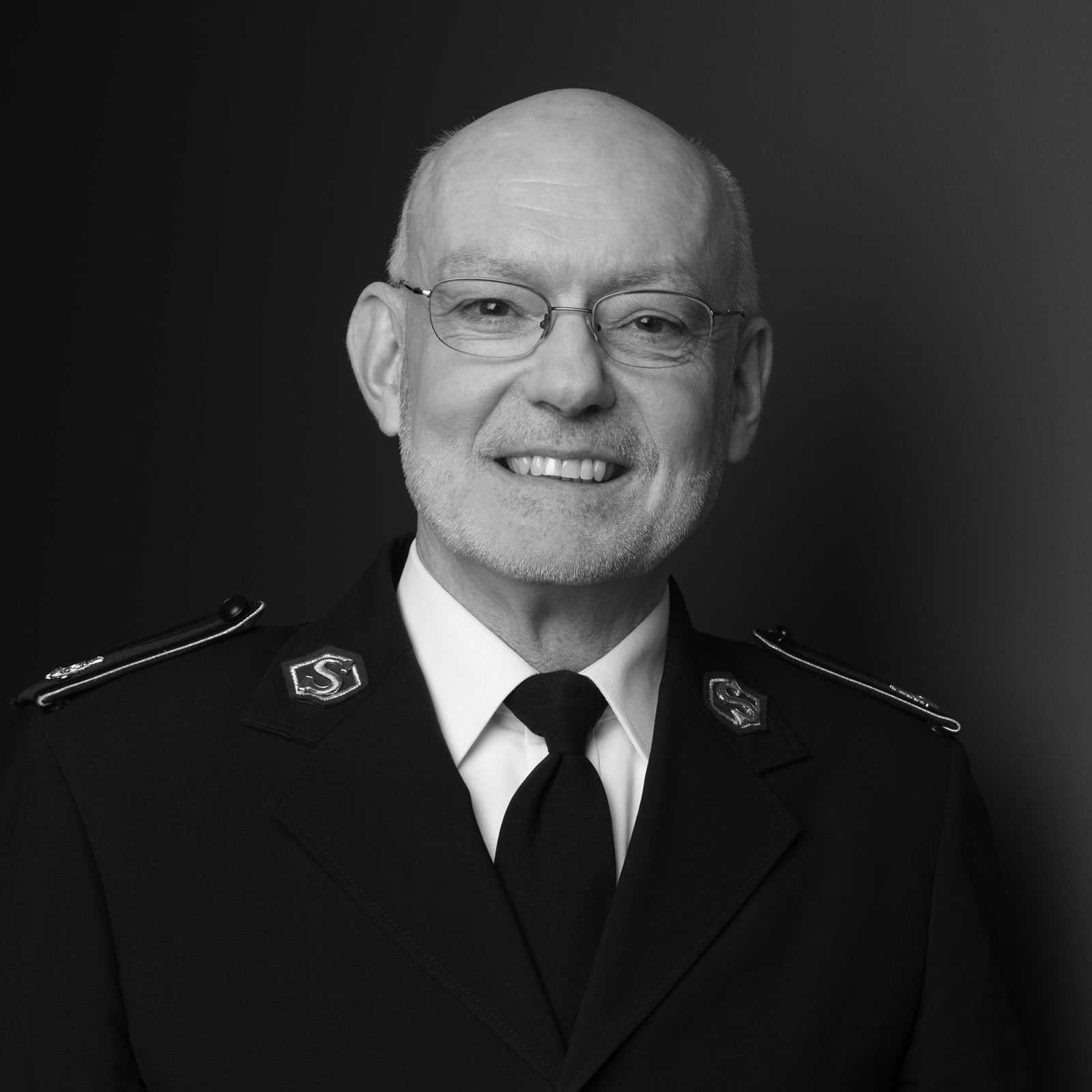
The Salvation Army strongly identifies as part of the Church universal, as a distinct community in the Body of Christ.
We can be theologically defined as Protestant, evangelical and Wesleyan – a Christian denomination with a permanent mission to the unconverted.
The Salvation Army has a vigorous commitment to ecumenical relations, with many local, regional and national Army leaders serving in significant leadership roles and councils. Internationally, The Salvation Army participates in the World Council of Churches in an advisory capacity, and our contributions are solicited and respected.
The Salvation Army welcomes involvement with other Christians in the many lands where the Army is privileged to witness and serve:
– Our theology is orthodox in thought and social in action, and thus attracts conservative and liberal
– Our constituency includes empowered leaders and the marginalized powerless, and thus covers the breadth of community
– Our ecclesiology operates as one movement around the world, and thus positions us for action and efficiency
– Our missiology includes a quasi-military motif, and thus identifies us as peace-making troops, very disarming
The Salvation Army is strategically positioned to be a medium of reconciliation and to partner together for the gospel with other Christian bodies throughout the world.
Richard Munn, Colonel
Check out The Salvation Army’s worship services.
You can also learn more about the theology of The Salvation Army.
Reference: The Salvation Army in the Body of Christ –An Ecclesiological Statement, IHQ, London, 2008
